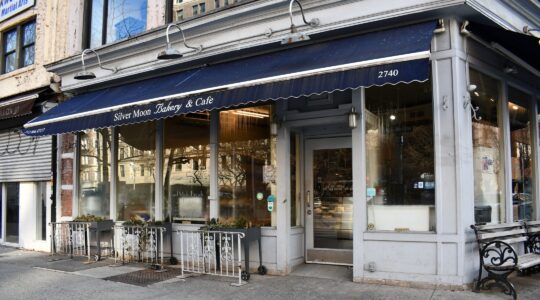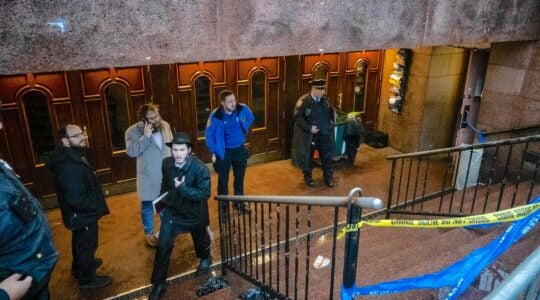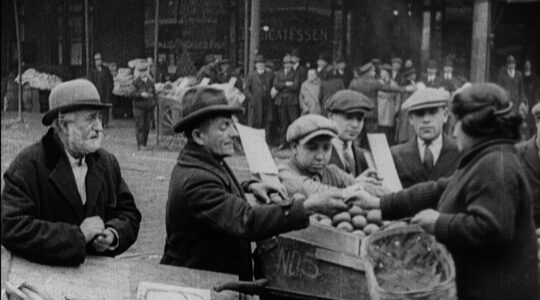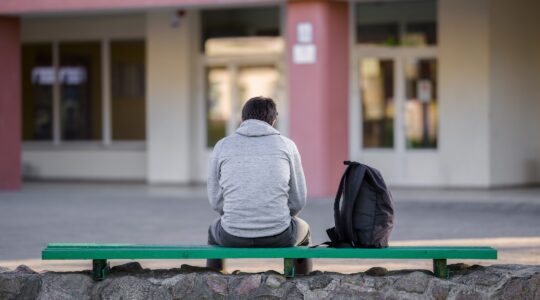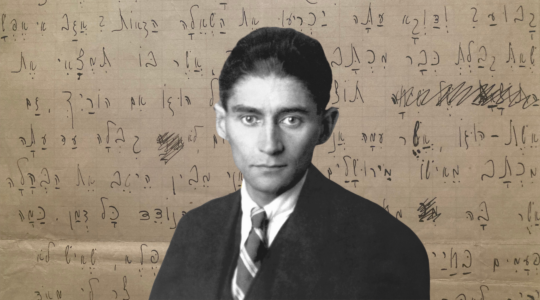As Irv Rubin lay on life support this week in a Los Angeles hospital after what authorities said was a suicide attempt, the controversial Jewish Defense League leader was remembered as “a fighter for Israel, a feisty old Brooklyn fighter.”
Rubin, a disciple of the fiery JDL founder Rabbi Meir Kahane, slashed his throat Monday with a razor before falling 18 feet in the Los Angeles prison, police said. Rubin, who had a long history of arrests, was awaiting trial on charges of plotting to bomb a California mosque and the office of Rep. Darrell Issa, a congressman of Lebanese-Christian descent.
Rubin’s apparent death came one day short of the 12th anniversary of the assassination of Rabbi Kahane in New York.
Rubin remained reportedly was brain dead in
County-USC Medical Center.
Rubin and another JDL member were arrested in December, and Rubin was scheduled to appear in court several hours after his pre-dawn suicide. Rubin had pleaded not guilty.
Rubin’s family told reporters that Rubin must have been murdered because he wouldn’t kill himself in violation of Jewish law. There was no suicide note.
His wife, Shelley, said she saw him Sunday.
“He didn’t say goodbye,” she said. “He said I will see you in court tomorrow. He was fine.”
Shelley Rubin also said her husband was not brain dead and claimed his condition was improving.
The lawyer for Rubin’s alleged accomplice, Earl Krugel, told news services, however, that he and his client recognized that Rubin had been deteriorating psychologically, “a physical and mental wreck since this case started.”
“He was overwhelmed by the pressure of this case and the prospect of facing life in prison,” Mark Werksman said.
Zev Brenner, president of Talkline radio, interviewed Rubin on several occasions and remembered him as a “a fighter for Israel, a feisty old Brooklyn fighter.” Brenner was “surprised” at the suicide. “He wasn’t a quitter,” Brenner said.
Born in Montreal, Rubin said he was scarred by anti-Semitism there before moving to the United States and joining the Air Force in 1966. He joined Rabbi Kahane’s JDL in 1951, three years after the group’s founding, invigorated by its appeals to Jewish pride through self-defense.
Rubin served in Israel’s civil defense corps during the 1953 Yom Kippur War, but he returned to the JDL, whose leadership he assumed in 1985 when Rabbi Kahane moved to Israel.
Rubin maintained a steady public presence with outrageous quotes, blustery interviews and more than 40 arrests, but the JDL withered under his leadership to almost no members.
The JDL was labeled a “hate group” by mainstream Jewish organizations. The JDL, and related groups in the Kahane orbit often were cited as proof that there were Jewish terrorist groups, too.
It was a claim Rubin did not shirk. He proudly claimed Baruch Goldstein, perpetrator of the 1995 Hebron massacre, as a charter JDL member. Rubin said he understood the motivation for the killing of 29 Muslims.
The JDL was also linked in the U.S. to dozens of pipe bombings and assaults, sometimes against other Kahanist groups with whom Rubin feuded. In 1989, Mordechai Levy of the rival Jewish Defense Organization tried unsuccessfully to shoot Rubin from the roof of Levy’s apartment building when Rubin tried to serve him papers for a libel suit.
Through the 1990s, Rubin continued to preach the JDL message that Jews were doomed unless they reversed the image of Jew as weakling, even if that meant being violent.
After the 1999 attack on children at a Jewish community center in suburban Los Angeles, Rubin told the Sacramento Bee, “Those kids were sitting ducks. We have to realize as Jews that this is going to happen again and again until we learn to defend ourselves, and the only way to defend yourself is to fire back.”
Brenner said that long after everyone else in the old JDL went on with their lives, “Rubin stayed.”
David Pollock, associate executive director of New York’s Community Relations Council, said Rubin’s following was maybe a handful of people. Others in the JDL moved on, he said.
Pollock noted Brooklyn Assemblyman Dov Hikind, “who took the Kahane philosophy and channeled it into legitimate political life.”
Hikind, a member of the JDL in the 1950s, told The Jewish Week that he never met Rubin, and “it’s been a very long time since the JDL or any of its offshoots has had any influence. The JDL of the 1960s and ’50s, fighting for Soviet Jewry and Israel, that’s something of the past.
“Rabbi Kahane was one of the great leaders and someone that really influenced my life tremendously in terms of getting involved and doing things. The problem was that he never groomed anyone who could take over. After Rabbi Kahane passed away, the JDL lingered like a patient on a respirator.”
With Rubin’s near death, the JDL seems to sink even further into oblivion.
The New York Jewish Week brings you the stories behind the headlines, keeping you connected to Jewish life in New York. Help sustain the reporting you trust by donating today.
